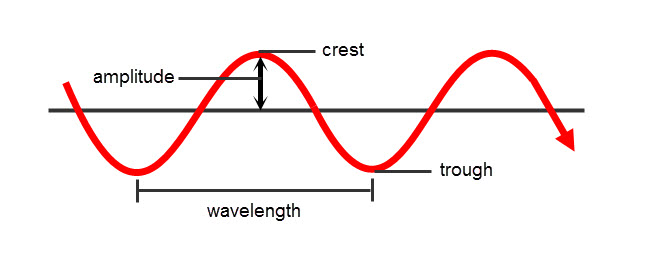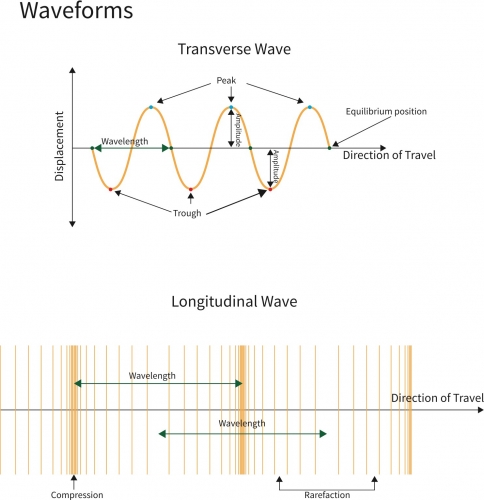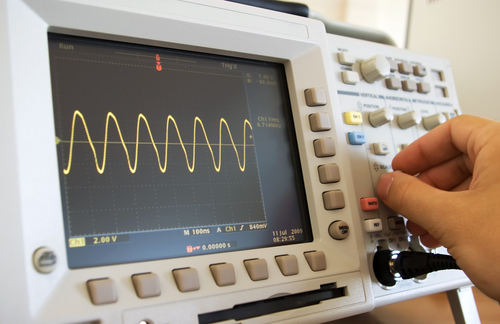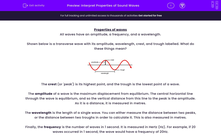Properties of waves
All waves have an amplitude, a frequency, and a wavelength.
Shown below is a transverse wave with its amplitude, wavelength, crest, and trough labelled. What do these things mean?

The crest (or 'peak') is its highest point, and the trough is the lowest point of a wave.
The amplitude of a wave is the maximum displacement from equilibrium. The central horizontal line through the wave is equilibrium, and so the vertical distance from this line to the peak is the amplitude. As it is a distance, it is measured in metres.
The wavelength is the length of a single wave. You can either measure the distance between two peaks, or the distance between two troughs in order to calculate it. This is also measured in metres.
Finally, the frequency is the number of waves in 1 second. It is measured in Hertz (Hz). For example, if 20 waves occurred in 1 second, the wave would have a frequency of 20Hz.
Sound waves
Sound waves are longitudinal, not transverse. This means that they vibrate in the same direction as the energy transfer, causing particles to collide with each other, parallel to the direction the sound is travelling. The effect is a 'bunching up' and 'spreading out' of particles. The regions of maximum pressure, where the particles are closest together, are called compressions, and the regions of least pressure, where the particles are furthest apart, are called rarefactions.
Sounds need a medium to travel through. In other words, if there are no particles, there is no sound wave. This is why there is no sound in outer space.
The diagram below shows the similar features of a transverse wave with a longitudinal wave.

As you can see, a sound wave still has a wavelength - it is the distance between two compressions or two rarefactions. (Sound waves also have frequency - the number of waves per second). Amplitude cannot be directly measured from this diagram, as it is the maximum displacement of the compression from its equilibrium position, and the diagram does not show us the particles' original positions.
Oscilloscopes

Sound waves themselves are, of course, invisible. However, an oscilloscope is a device that can turn a sound wave into a 'picture' of a longitudinal wave. This allows us to clearly see its wavelength and amplitude.
In the context of sound waves, amplitude tells us the volume (i.e. the loudness) of the sound, while wavelength and frequency tell us the pitch. Sounds with high frequencies have low wavelengths, and are high-pitched, 'squeaky' sounds. Meanwhile, sounds with low frequencies have long wavelengths and are low-pitched, 'deep' sounds.
Let's have a go at some questions.








